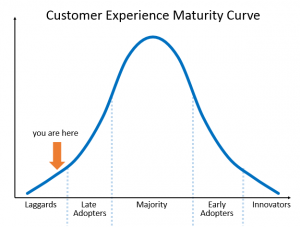 As an industry, customer service has long focused on the quality of support being delivered within the walls of a call center. Only recently has it migrated to an omni-channel focus whereby all touchpoints are now equal in importance. At least, that’s the concept. In reality, there are some interaction channels that still fall through the cracks. One of the most impactful, yet riskiest to ignore, is what happens at a homeowner’s residence.
As an industry, customer service has long focused on the quality of support being delivered within the walls of a call center. Only recently has it migrated to an omni-channel focus whereby all touchpoints are now equal in importance. At least, that’s the concept. In reality, there are some interaction channels that still fall through the cracks. One of the most impactful, yet riskiest to ignore, is what happens at a homeowner’s residence.
I recently had an experience with a regional communications company that installed fiber optic lines throughout my area. The company never sent a letter or other notification to residents, so the first we realized was when trucks started arriving on our street and ripping out landscaping. One of these trucks broke down, partially blocking my driveway, and we watched as the driver walked off and left it. When the truck started leaking an unknown substance, my wife called the company. Their response? “Oh, that’s where it is! We’ve been wondering what happened to that truck.” Obviously, our perception of the company fell dramatically.
I share this example as a real-world illustration of how much impact, good or bad, a single experience can have on a homeowner’s perception of your brand. Although a mature industry, field service management still lags in the customer experience revolution. And yet omnichannel perspectives are here to stay. It’s no longer sufficient to think that simply offering a voice of the customer survey on your website is enough to check the box on customer experience (CX). Customer expectations require a new approach to infusing field operations with insights and feedback.
Behind the (Maturity) Curve
Industry innovators and consultancies alike have been touting the benefits of using customer feedback in field service operations (FSO) for the last several years, but the trend seems to have stalled. Although all FSO leadership recognizes the value in using customer perceptions of in-home or on-site experiences to inform strategy, the quality of the data being collected is lower than it should be.
 Most field operations and management teams have renewed focus on digital enhancements to workflow processes, with nothing getting more attention than mobility. A mobile workforce introduces myriad challenges to any operational delivery team. Things are further complicated by reliance on a company’s IT team for enablement and maintenance. With so much scrutiny given to internal capabilities and enablement, focus has shifted from the customer … a precarious and dangerous situation.
Most field operations and management teams have renewed focus on digital enhancements to workflow processes, with nothing getting more attention than mobility. A mobile workforce introduces myriad challenges to any operational delivery team. Things are further complicated by reliance on a company’s IT team for enablement and maintenance. With so much scrutiny given to internal capabilities and enablement, focus has shifted from the customer … a precarious and dangerous situation.
In the world of customer experience management, applying a maturity curve to field service makes sense. It’s an easy yardstick against which to compare yourself; if you’re too far to the left, it’s time to catch up. That’s where I see field services today. Customer demands and commoditized products and services make things far too easy for any end user to switch to a competitor.
What to do
Regardless of contact type, we know that interaction quality has a direct impact on short-term dis-loyalty; the harder your customers have to work to use product or service, the worse you’ll perform in the market. The best thing field services techs can do is make everything, from installation to troubleshooting to order upgrades, as easy and seamless as possible.
My advice is to take a page from more innovative customer experience sectors, like financial services and technology. Implement a robust post-interaction survey – agnostic of technician influence – so you can begin measuring performance across your footprint, as well as within specific segments and among providers. Use interactive voice response (IVR) technology to deliver the invitation within minutes of the field tech leaving the property so the customer has fresh recollection. Include a red-alert feature, preferably with a live escalation to someone who can help immediately, so you know where and when issues arise. And include some open-ended questions so customers can describe their experience in their own words. Survey results should be made available to all stakeholders in real time, to enable ongoing monitoring and rapid action.
The more robust your program, the more information you’ll have. Want to hear more? Check out this video of Mindy Keith, SVP of DIRECTV, as she describes how their field operations has benefited from robust capture, monitoring and leveraging of in-home voice of the customer feedback.
Image source: Thinkstock



